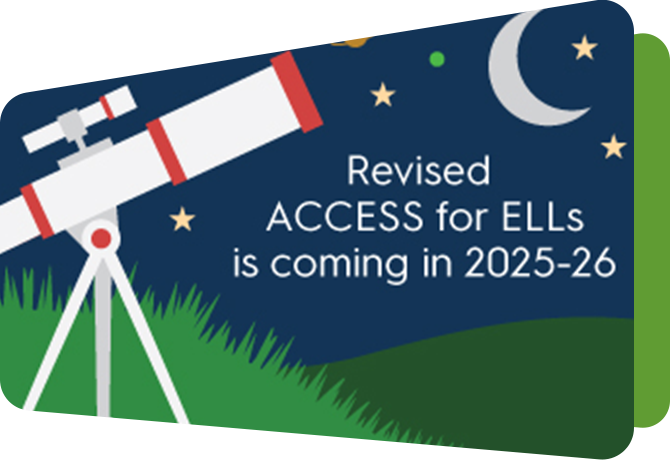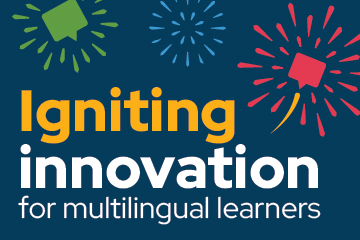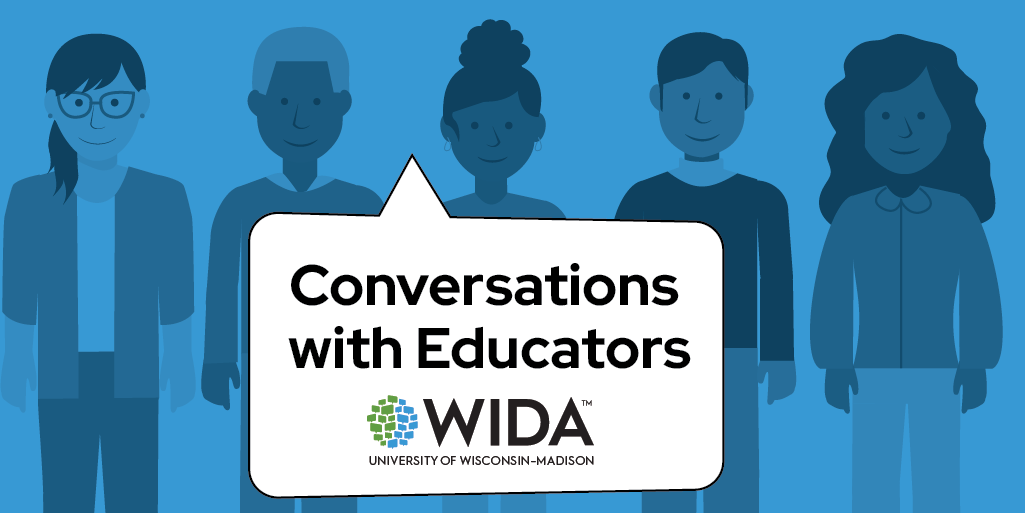Resources/Recursos
Featured Resources



All resources/Todos los recursos
Filter resources by:
Resources/Recursos
Examining English Learner Testing, Proficiency, and Growth: Before, During, and “After” the COVID-19 Pandemic
This report examines English learner testing, proficiency, and growth in the years surrounding the COVID-19 pandemic. This research builds on an October 2021 report on the impact of the pandemic, and includes data from the 2021-22 ACCESS for ELLs test administration. Findings indicate that in some grades and language domains EL's average proficiency and growth have returned to pre-pandemic levels. However, for most grades and language domains the evidence points to a continuing impact of COVID-19 on English learners’ English language development.
Published April 2023
Author: Narek Sahakyan, Glenn Poole
Released April 2023
Impact of ability range restriction on item characteristics in ACCESS multistage adaptive testing
This report describes how different student ability restrictions may affect item characteristics in the ACCESS multistage adaptive testing, and presents options for item administration in field testing.
Resource Details View Download NowReleased April 2023
ACCESS for ELLs Prueba de desempeño linguístico en inglés
Este informe brinda información sobre el nivel de desarrollo del alumno en la prueba de desempeño linguístico en inglés ACCESS for ELLs.
Detalles del recurso Ver Descargar ahoraReleased February 2023
ACCESS for ELLs Interpretive Guide for Score Reports
This comprehensive document explains the types of scores reported by ACCESS for ELLs for students in kindergarten through grade 12.
Resource Details View Download NowReleased February 2023
Sample Alternate ACCESS Individual Student Report for Educators
This version of the report is for educators and provides information about a student’s scores on the Alternate ACCESS English language proficiency test. This test is based on the WIDA Alternate English Language Development Standards and is used to measure students’ progress in learning English. Scores are reported as Language Proficiency Levels and as Scale Scores.
Resource Details View Download NowReleased February 2023
Adopting a Language-Focused Approach to Transitions Across PreK-3 Settings
This concept tool provides an overview of equitable, language-focused approaches to multilingual children’s transitions across programs, districts, schools and grade levels (PreK-K, K-1, 1-2 and 2-3).
See the Teaching in PreK-3 page for context.
Resource Details View Download NowReleased January 2023
Gathering and Reflecting on Families’ Language and Cultural Goals
This WIDA Snapshot focuses on how you can gather information and reflect on the language and cultural goals families have for their children.
Resource DetailsReleased November 2022
Recaudando y reflexionando sobre los objetivos lingüísticos y culturales de las familias
Este resumen informativo se enfoca en cómo puede recaudar información y reflexionar sobre los objetivos lingüísticos y culturales que las familias tienen para sus hijos/as.
Resource DetailsReleased November 2022
WIDA MODEL Flyer
Are you looking for an interim ELP assessment to predict student performance on ACCESS for ELLs? This flyer provides information on why you should try WIDA MODEL.
Resource Details View Download NowReleased August 2022
Engaging with Families of Young Multilingual Children
This WIDA Snapshot is grounded in WIDA’s ABCs of Family Engagement and can be used to initiate reflection and conversation on local efforts to engage with families of multilingual children.
Resource DetailsReleased August 2022
ACCESS for ELLs: Entendiendo el puntaje de su niño
Envíe este volante a los hogares con los estudiantes, junto con el Informe individual del estudiante de ACCESS for ELLs. Este folleto provee información sobre cada aspecto de la puntuación incluida en el informe. Utilice esta guía en español para ayudar a los padres a comprender qué significan las puntuaciones y cómo se utilizan.
Detalles del recurso Ver Descargar ahoraReleased July 2022
Using ACCESS for ELLs to Promote Beneficial Outcomes for English Learners Flyer
This flyer provides a breakdown of the role school/district-level educators, state-level administrators and WIDA play in using or developing ACCESS Online and Paper test scores, interpreting scores and making decisions based on scores to best serve English learners. Plus, there’s a checklist outlining the positive and intended outcomes of using ACCESS Online and Paper scores, so you’ll always know what it takes to ensure your students have the supports they need.
Resource Details View Download NowReleased July 2022
Young Multilingual Children in Pennsylvania
In this study, completed for the Pennsylvania Office of Child Development and Early Learning, we explore the perceptions, experiences and decision-making of 13 parents of young multilingual children, ages birth to 5 years. The focus revolves around children’s language learning and development, family engagement practices and children’s participation in early care and education (ECE) programs.
Published 2020
Resource Details View Download NowReleased May 2022
Muestra Alternate ACCESS informe individual del estudiante
Este informe brinda información sobre el nivel de desarrollo del estudiante en la prueba alternativa de desempeño lingüístico en inglés ACCESS. Esta prueba se basa en los estándares alternativos sobre el desarrollo del idioma inglés de WIDA y se utiliza para medir el progreso de los estudiantes en el aprendizaje del inglés. Los puntajes se informan como Niveles de desempeño lingüístico del idioma y como Escalas de puntaje.
Detalles del recurso Ver Descargar ahoraReleased February 2022
Multilingual Children and Their Families
This WIDA Snapshot provides an overview of who multilingual children are, the benefits of promoting home language(s), and initial ideas for developing reciprocal partnerships with multilingual families.
Resource DetailsReleased February 2022
Illustrated Guiding Principles of Language Development: Printable Posters
These posters bring each of the 10 WIDA Guiding Principles of Language Development to life and can be used by educators in classrooms and with parents, families and community members. Each illustrated guiding principle is set up for printing on a color laser printer. The finished printed size is 8.5x11 inches.
Resource Details View Download NowReleased January 2022
Examining English Learner Testing, Proficiency and Growth: Before and Throughout the COVID-19 Pandemic
This report examines English learners’ (EL) testing, proficiency and growth in the academic years of 2018–19, 2019–20 and 2020–21, using population-level data from ACCESS for ELLs Online, administered across the WIDA Consortium to students identified as ELs. The objective of the report is to shed light on the impact of the COVID-19 pandemic on ELs’ educational outcomes.
October 2021
Authors: Narek Sahakyan, H. Gary Cook
Released October 2021
Putting It All Together: Next Steps for Using the 2020 Edition
In this webinar, the WIDA standards development team discusses and models the tools, provided in the 2020 Edition, for initiating critical conversations with school leaders and colleagues.
Resource DetailsReleased March 2021
Curricular Considerations: Introduction to Collaborating Around the 2020 Edition
The WIDA ELD Standards Framework, 2020 Edition brings new practical ways for all educators working with multilingual learners to conceptualize the development of content and language together through asset-based, equitable, and rigorous approaches in curricular design. This session will encourage participants to think about what collaboration looks like in these contexts.
Resource DetailsReleased February 2021
Introduction to the Updated Key Language Uses
One of the components of the WIDA ELD Standards Framework is the Key Language Uses (KLUs). The KLUs summarize the most prominent language uses across disciplines, helping educators organize and prioritize curriculum and instruction. Learn about the updated KLUs – Inform, Narrate, Explain and Argue.
Resource DetailsReleased February 2021




